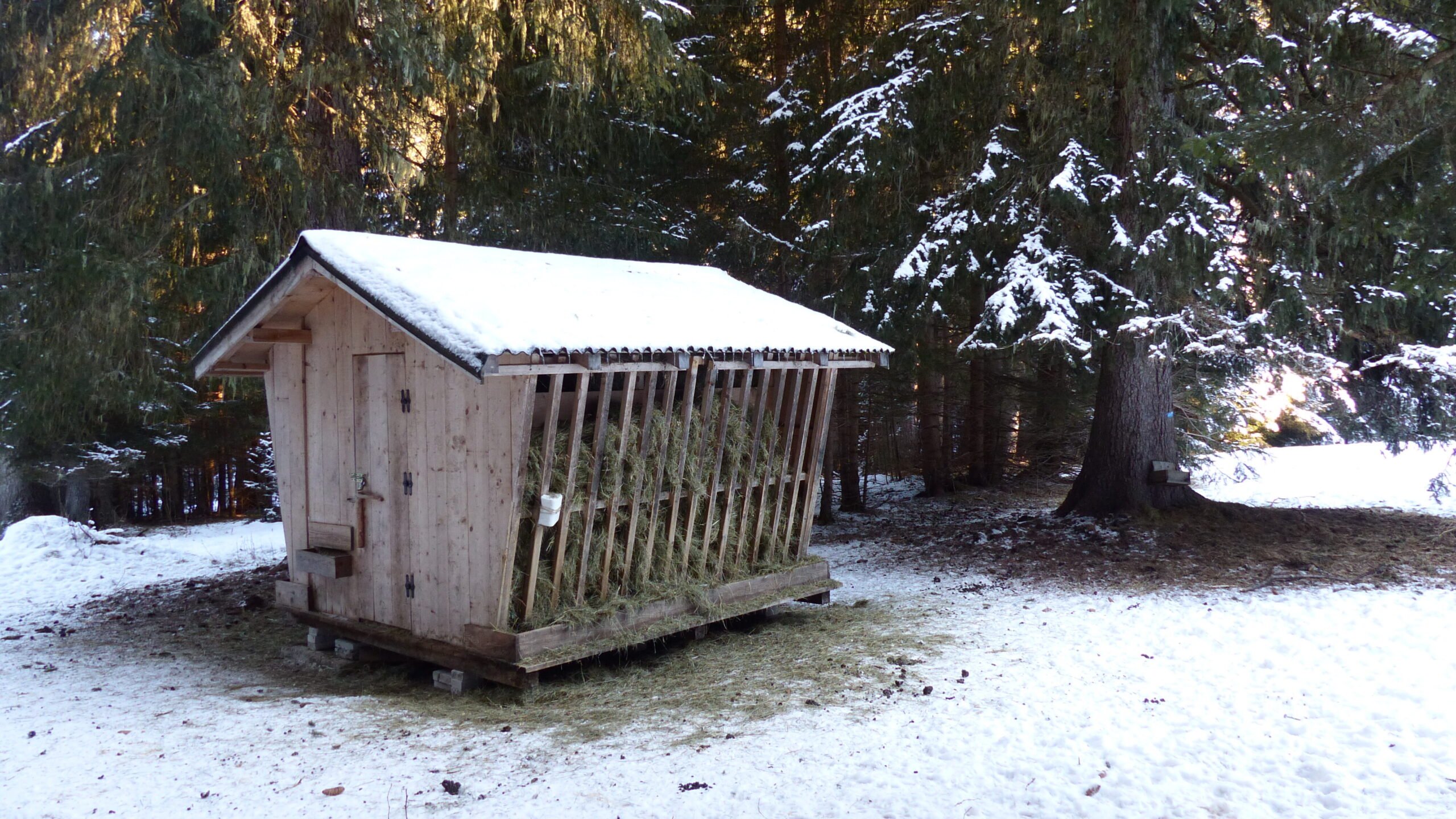Buffet for the wolf?
The role of artificial feeding sites for wild ungulates in wolf predatory behaviour in Val di Fassa (Trentino).
The study on the impact of artificial feeding sites for wild ungulates on wolf predatory behaviour in Val di Fassa (province of Trento) has just started. This represents one of the actions included in the collaboration agreement between MUSE and Associazione Cacciatori Trentini (ACT), the main local hunting association, as part of the LWA EU Stewardship Program. This Program promotes and manages the co-planning and implementation of concrete actions developed together with those stakeholders (Stewards) who decide to take an active part in the conservation and management of the wolf in the Alps.
The idea was born from a specific interest of ACT, following the numerous predations on wild ungulates, especially mouflons, but also red and roe deer, recorded in recent years in the immediate vicinity of artificial feeding sites. These feeders, distributed along the whole valley, are loaded with hay by hunters during the winter months, with the aim of increasing the survival of wild ungulates in the most severe period of the year (please note that in the province of Trento this practice is allowed and regulated by the provincial government resolution no. 2852 of the 30th of December 2013 concerning artificial structures for the foraging of wild fauna). With the return of the wolf, however, the aggregation of ungulates around the feeders could create real buffet for the predator, especially in very snowy and cold winters. This seems to be particularly evident for the mouflon, a non-native species introduced in the province for hunting purposes starting from the ‘70s. Native to areas devoid of large predators, the species does not exhibit anti-predatory behaviors. In addition, in winter it tends to gather in large numbers at foraging sites, making it easy prey for the wolf, especially when the snow is particularly high.
The objective of the study is to provide an overview of the dynamics of wolf predation in an area where artificial feeding sites are numerous, and that is home to the largest population of mouflons in the province.

The sites under study will be systematically and intensively monitored between January and March 2022 by the MUSE (Vertebrate Zoology Section) and ACT’s staff, with the support of the personnel of the Forestry Corps of the Autonomous Province of Trento and the Forest Keepers, thanks to the use of camera traps and direct inspections to record any wolf signs and predations.











